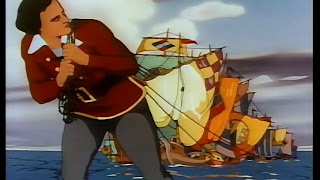
You might have heard of Lewis Carroll's classic fantasy novels, Alice's Adventures in Wonderland and Through the Looking-Glass. Each book is about a young British girl named Alice who enters in a bizarre realm and encounters different zany residents. Two theatrical films both produced by Walt Disney Studios are based on theses books and are done in animation.
- Disney's first Alice film was done in 1951 and was the classic Alice in Wonderland. It was produced by Clyde Geronimi, Wilfred Jackson and Hamilton Luske.
- The second premiered recently on March 5, 2010 and was produced by Tim Burton under the same title as the first one.
- The 1951 version involves traditional hand drawn animation with wild colors, sound, flow and rhythm that was previously used by Disney to produce Fantasia (1940) and The Three Caballeros (1944).
- In Tim Burton's version of Alice in Wonderland, he uses live action animation with computers to make the movie.
However, they are not sequels.
In Disney's first Alice in Wonderland, the story begins with the curious Alice following the White Rabbit down the rabbit hole and finding herself in Wonderland.
- The story goes through a series of events where Alice runs into a variety of weird characters while hunting down the White Rabbit.
- She eventually is fed up with everyone's nonsense and just wants to go home. The film ends with Alice waking up, revealing the whole story was a dream.
- In his film, Alice returns to Underland (Alice misheard it to be Wonderland) after being absent from it since the age of seven.
- Unlike the first movie, the inhabitants there depend on and look to Alice as their savior. Each character in Underland seems to have a special bond with her.
- Alice takes time to socialize with her old friends whereas in the first film she doesn't seem to be attached to any of the residents in Wonderland.
- In fact they seem to be only focused on themselves.
Overall, Walt Disney's Alice in Wonderland's, moral is that one should be careful what they wish for. For in the film Alice dreams of living in a fantasy world of nonsense which ends up coming literally true. The moral in Tim Burton's Alice in Wonderland is to be true to yourself and do what what you want to do in life.
These two Alice in Wonderland films compliment each other well. The earlier film is aimed at entertaining the whole family with a series of events whereas Tim Burton's film takes the events and transforms them into a more well-developed story.


